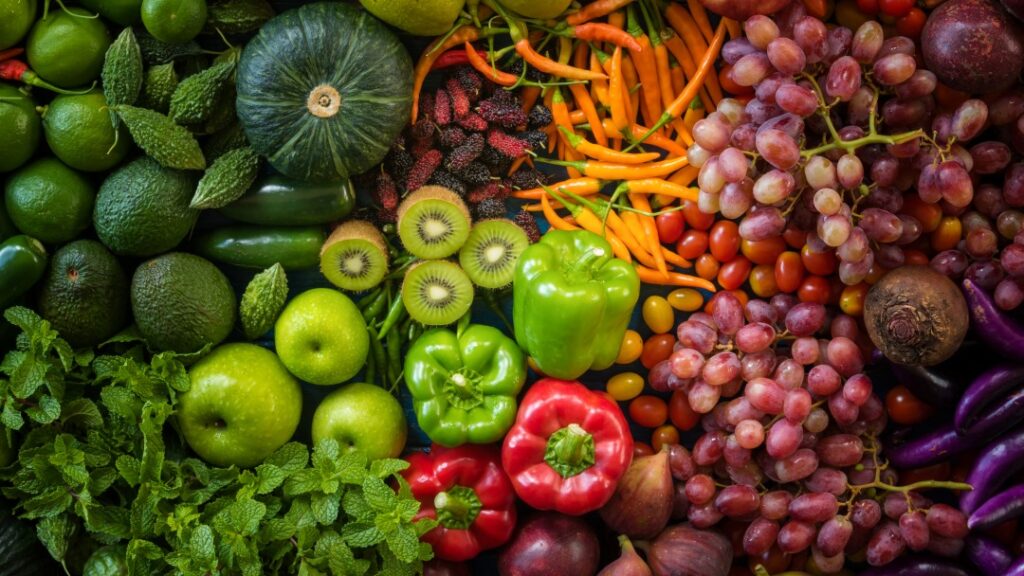A quick trip to the bakery, a roll or pretzel in hand and the day can start well satiated. Or is it? Because anyone who frequently goes to the bakery has probably already noticed that a pretzel no longer costs what it did 20 years ago. Twenty years ago, says baker Joseph Baader in Frickingen, a pretzel cost just 50 cents. Today, it costs twice as much in many bakeries. Is it still possible for us to eat quickly, cheaply and, above all, healthily? And if so, how can we do that?
Who can still afford that?
We have all noticed that food prices have skyrocketed to unaffordable levels in recent years due to the pandemic, war and environmental disasters.
The Federal Statistical Office writes that food prices increased by +9 % in August 2023 compared to the same month last year. This means that food remains the strongest price driver among the goods sectors. Compared to July 2023 (+11.0 %), the price increase for food has slowed down, but this is only slightly noticeable.
Even frozen goods like pizza are no longer as cheap as they once were. While the manufacturer Dr. Oetker had reached a price of €3.49 for 320 g for its "Ristorante Pizza Tomate Mozzarella" after several price increases, the competitor Wagner also followed suit and increased its stone oven salami pizza to €3.39 (350 g). The total price increase here over the period August 2021 to August 2023 is 29.7 % and 36.1 % respectively. Absurd, isn't it?
The popular nut nougat cream has also increased its price, after remaining stable for a long time, to €3.29, an increase of 10 % compared to 2021. At that time, a jar still cost €2.99. The constant price adjustments and sometimes large price jumps and fluctuations of individual food brands, are often incomprehensible and seem like a bad joke. Do you know this? It's not unusual for me to find myself shaking my head in front of the refrigerated shelf in the supermarket.

When will food prices go down again?
It is important to know where the prices come from and who has influence on them. Prices in supermarkets, for example, are set by retailers. At the same time, the specifications come from the manufacturers - with their purchase prices for Rewe, Edeka and Co. Of course, retailers and manufacturers try everything to find out how much consumers are willing to pay for a certain product. Supply and demand are the key words here. Thus, our buying behaviour also has an influence on prices in the supermarket.
But can we, the consumers, still expect and hope for falling food prices?
And the answer is "yes", there is still hope! However, we still need a little patience and stamina, because it could still take quite a while before the prices for food in the supermarkets fall again. While it was assumed at the beginning of the year that prices would calm down somewhat over the summer, this has unfortunately only happened to a limited extent.
But there is some good news: Butter and edible oil prices decreased by -13.9 % compared to August 2022.
AND: Organic food has not become as expensive as conventional food. Our Wacker products are also affected by this advantage. Fortunately, we have been able to avoid major price adjustments or fluctuations.
7 tips for a healthy, fast and cheap diet:
Many people assume that a healthy diet is expensive. Of course, a healthy diet doesn't work completely without money. But spending €3.49 on a frozen pizza, which is quick to prepare but neither healthy nor keeps you full for long, is not the smartest or cheapest way to go. The fact is, an unhealthy diet can also cost a lot of money and be really expensive. And on top of that, we spend our hard-earned money on "empty" vitamins and nutrients that are simply harmful to our health.
With these tips, you'll not only eat healthily, but also without much effort and, above all, cheaply:
- Buy healthy convenience food: That works? Sounds almost too easy and too good to be true. But yes, healthy ready meals do exist! They are not always easy to find, but if you don't look for them in the freezer with the pizzas and do some research beforehand, you can also find healthy products when it comes to ready-made meals. Because fast, healthy and cheap are not a myth. The ready-made meals you can fall back on with a clear conscience at any time, if you don't feel like cooking, are the Ready-made soups from Wacker. They can be eaten not only warm but also cold, are full of nutrients and vitamins and, above all, taste like home-cooked:

- Seasonal and regional food: Buy fresh fruit and vegetables that are in season and from the region. Seasonal produce is usually cheaper and more environmentally friendly as it does not have to travel long distances. A visit to the weekly market is the perfect opportunity!
- It doesn't always have to be organicFruit and vegetables from the region often taste better than organic food from the other side of the world. Besides the taste, they are also cheaper than imported goods. What is really behind "organic" and which myths about organic food are true, you can find out here. in this article read up.
- Become a bargain hunter: In German supermarkets we are "overrun" with new offers every week. Use this for yourself and your wallet. Because special offers can save you a lot of money! Insider tip: An old but still effective tip: Never shop hungry! If you wander through the supermarket with a growling stomach, you are more susceptible to temptations of all kinds.
- Meal Prep: Plan your meals in advance and prepare larger portions that you can freeze or use for several days. This helps avoid leftovers and saves time and money. With these tips, you can get into the meal prep game quickly and easily: 9 Tips for Meal Prep
- Utilise food scraps: Use leftovers for new dishes, for example as a filling for wraps or omelettes or for salads. Here you can find some Tips and recipes for less food waste
- When the stomach cries out for a pretzel: Of course, you can get a pretzel or sandwich from the bakery every now and then 🙂 A great breakfast alternative, for which you need nothing more than a spoon, is our Porridge to go. With Apple and cinnamon or with Sour cherry. Satiating, high in fibre and healthy! The fastest breakfast in the world. What more could you want 🙂 .

Order our Porridge to go in a stock pack now!
Sources: Federal Statistical Office, Tagesschau, Utopia, The technicians
Image Throne Room: Adobe Stock, Viks_jin, #569722850
Image No money in your pocket: Adobe Stock, khosrork, #440759971





I have a different opinion on the subject of food prices. I myself am happy to pay for good food because it is good for my body and tastes good. With products like butter, farmers have long complained that the price pressure is enormous and that their work is not appreciated. And if Nutella becomes more expensive, it's actually good for your health because it contains far too much sugar. In Denmark, such products have long been much more expensive than here, which should lead to health-promoting consumer behaviour.
With many people who complain about too high food prices, I notice that they gladly accept quite high prices for fast food and hardly buy fruits and vegetables. And that they spend a large part of their income on consumer electronics, smartphones etc.. Or even on smoking. Being a little more frugal here not only helps your own wallet, but also the environment.
Hello dear Jutta,
Thank you for your comment and your perspective on the issue.
We all value healthy and unhealthy food differently. Therefore, we are not all willing to spend the same price on certain foods.
Selling unhealthy food more expensively than healthy food is an interesting measure and certainly leads to health-promoting consumption behaviour.
Just as written in the article, the prices of fast food, frozen ready meals and other obviously unhealthy foods have also risen in Germany.
You might think that more people are now turning to fruit and vegetables, because this is of course the healthier alternative. Unfortunately, this is not the case.
Our intention is, just like yours, that people are willing to invest in themselves and to eat healthily. Because whether I spend 4 euros on a low-vitamin or even vitamin-free frozen meal or 4 euros on fruit and vegetables should not really be a discussion.
Many greetings
Fabienne